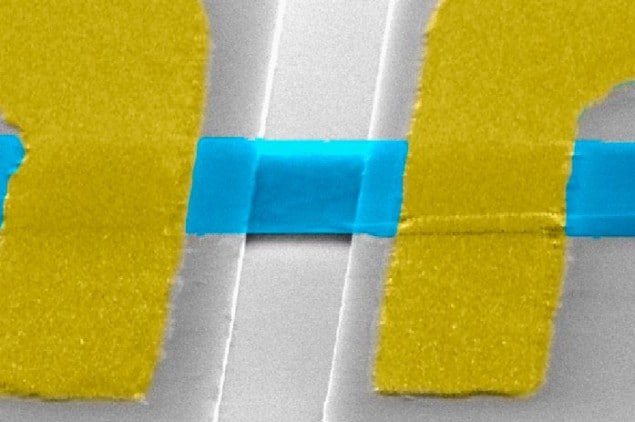
The thermal conductivity of multi-layer graphene decreases as the material gets thicker, according to researchers in the US. The team believes that despite the drop, several layers of graphene – sheets of carbon just one atom thick – could be better at cooling tiny electronic devices than conventional copper thermal conductors. The work also confirms a previous study by the group suggesting that graphene conducts heat better than any other known material.
Graphene is a flat sheet of carbon atoms arranged in a honeycombed lattice. It has been attracting the attention of scientists and engineers alike since it was first created in 2004 thanks to its unique electronic and mechanical properties that show great technological promise. In particular, it could be used to make ultrafast transistors because the electrons in graphene travel through the material at extremely high speeds.
In 2008 Alexander Balandin and colleagues at the University of California, Riverside, showed that graphene has a very large intrinsic room-temperature thermal conductivity in the 3000–5000 Wm–1K–1 range, depending on the size and quality of the sample. These values are higher even than diamond, which had been the best heat conductor known.
From 2D to 3D
Until now, however, no-one had studied how the thermal conductivity of multi-layer graphene changes as it goes from being 2D to 3D as more layers are added. Balandin’s team has now done this by measuring the thermal conductivity of “few-layer” graphene samples that contain between two and ten atomic layers. Their non-contact optical technique involves using Raman spectroscopy to measure the local temperature of free-standing graphene flakes.
The researchers found that the material’s thermal conductivity decreases as the number of atomic layers increases. However, it still remains very high at 1300 Wm–1K–1 for graphene containing four atomic layers. By comparison, bulk copper, which is widely used to cool computer chips, has a thermal conductivity of around 400 Wm–1K–1, which decreases to about 250 Wm–1K–1 in very thin copper films.
“In practical applications, graphene needs to be interfaced with composites or other substrates, such as silica (SiO2) chips, which will reduce its thermal conductivity, but the indications are that it will still be better than that of copper,” Balandin told physicsworld.com.
Phonons are at fault
According to the team, the thermal conductivity decreases with thickness because phonons – quantized vibrations of the crystal lattice that transport heat – couple across the different atomic layers in the material. The more layers there are, the greater the coupling and more phonon scattering occurs, disrupting the conduction of heat.
The results confirm that few-layer graphene, which is easier to produce than single layers of the material, could be ideal for removing heat from electronic components, like those used in computer chips. Unwanted heat is a big problem in modern devices that are based on conventional silicon circuits – and the problem is getting worse as devices become ever smaller.
In the short term, according to Balandin, graphene could be used in applications such as thermal interface materials for chip packaging or transparent electrodes in photovoltaics. “However, as the material becomes more widely available in larger quantities in a few years, it might be used in conjunction with silicon in computer chips – for example, as interconnect wiring or as a heat spreader,” he added. The ultimate dream of all-graphene electronics may still be a way off, though researchers around the world are working hard to make it a reality.
Spurred on by these results, the Riverside team is now looking at ways to incorporate few-layer graphene into computer chips.
The work was published in Nature Materials.



